
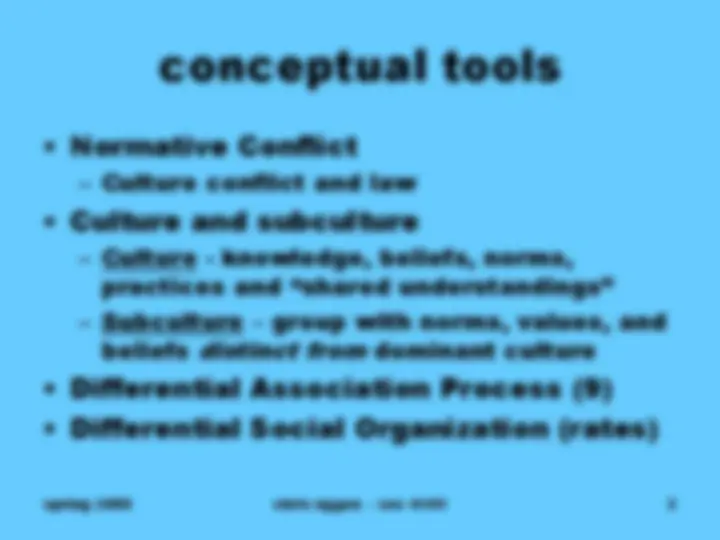
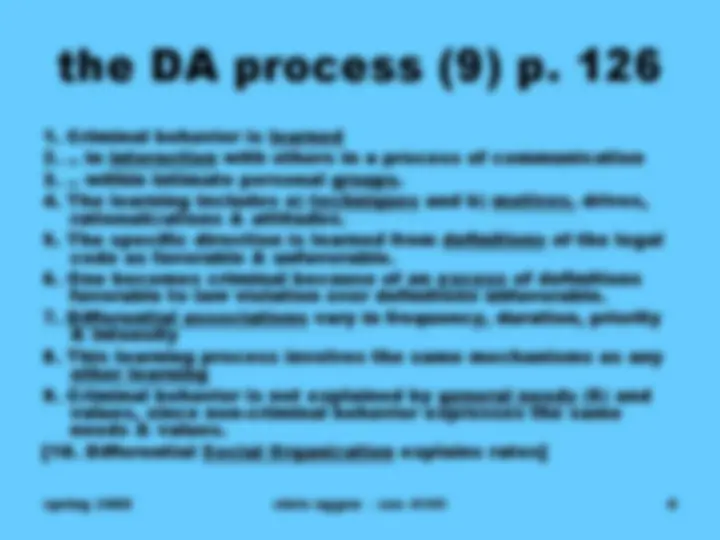
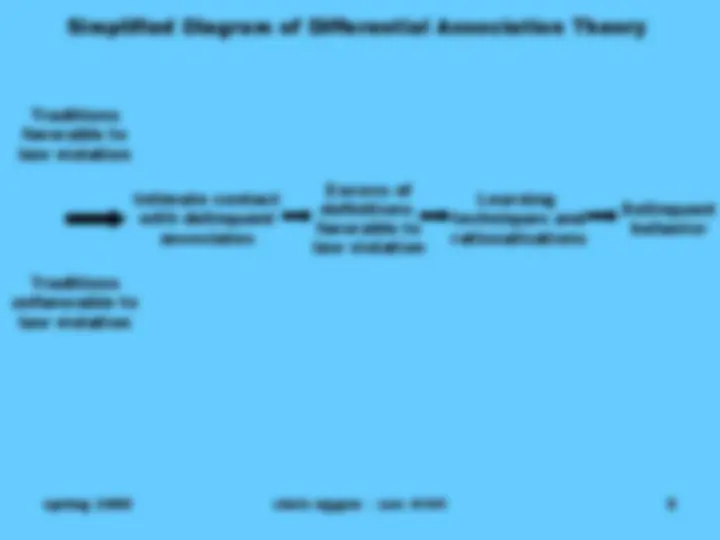
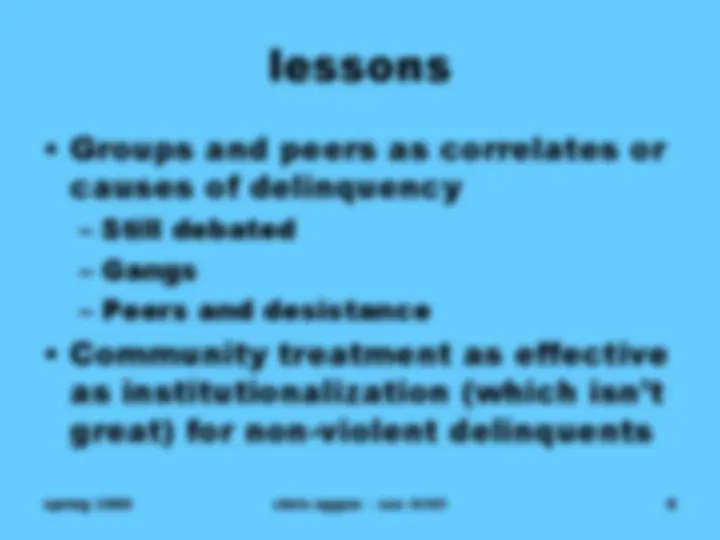
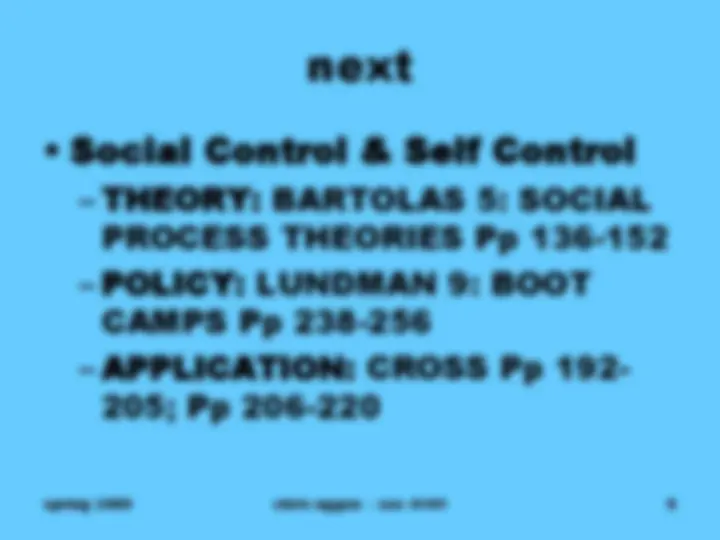


Study with the several resources on Docsity

Earn points by helping other students or get them with a premium plan


Prepare for your exams
Study with the several resources on Docsity

Earn points to download
Earn points by helping other students or get them with a premium plan
Community
Ask the community for help and clear up your study doubts
Discover the best universities in your country according to Docsity users
Free resources
Download our free guides on studying techniques, anxiety management strategies, and thesis advice from Docsity tutors
A series of lecture notes from a Sociology 4141 class taught by Chris Uggen in Spring 2005. The notes cover the topic of Differential Association Theory, which posits that criminal behavior is learned through interaction with others in intimate personal groups. an introduction to the theory, conceptual tools, the process of differential association, extensions and policy implications, and critiques of the theory.
What you will learn
Typology: Slides
1 / 9

This page cannot be seen from the preview
Don't miss anything!






Simplified Diagram of Differential Association Theory